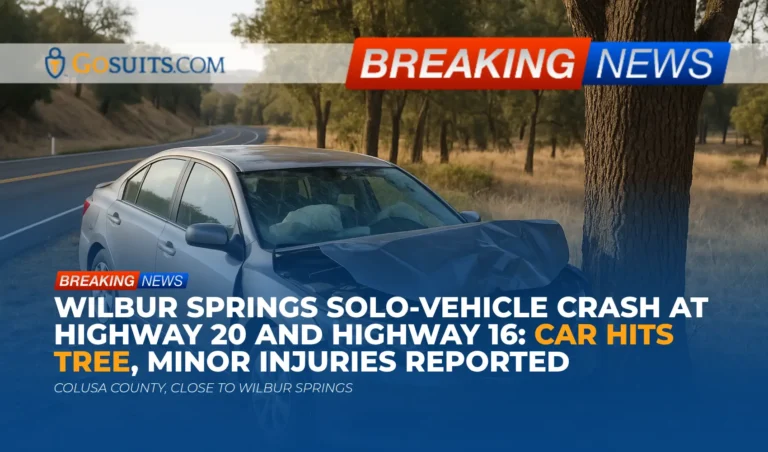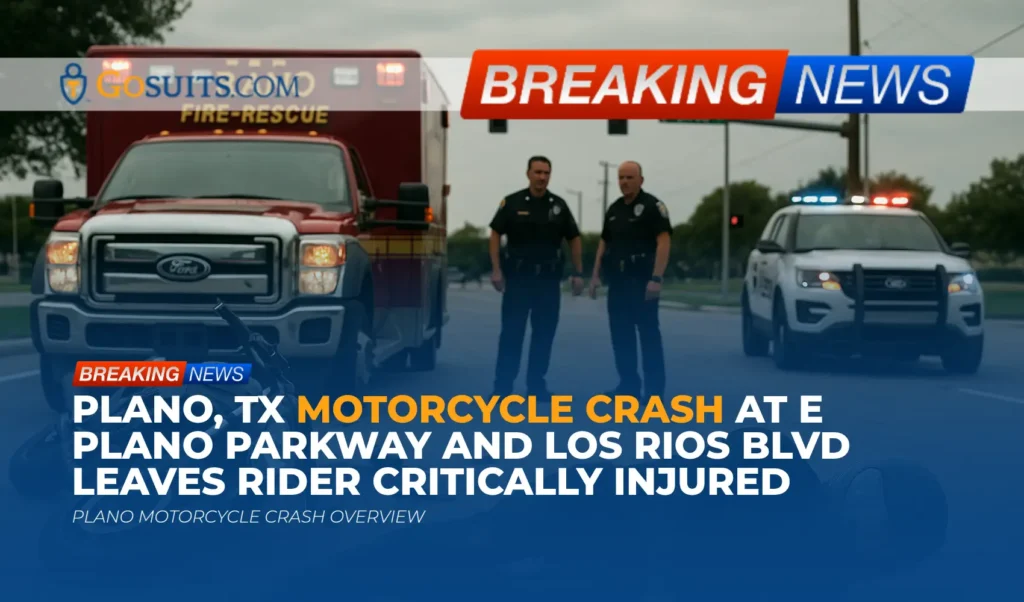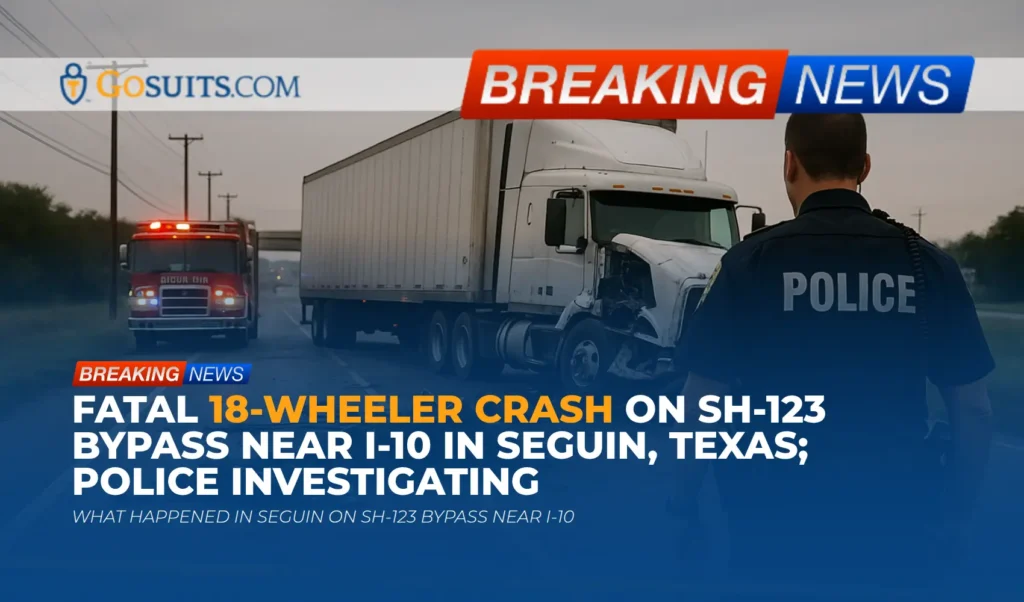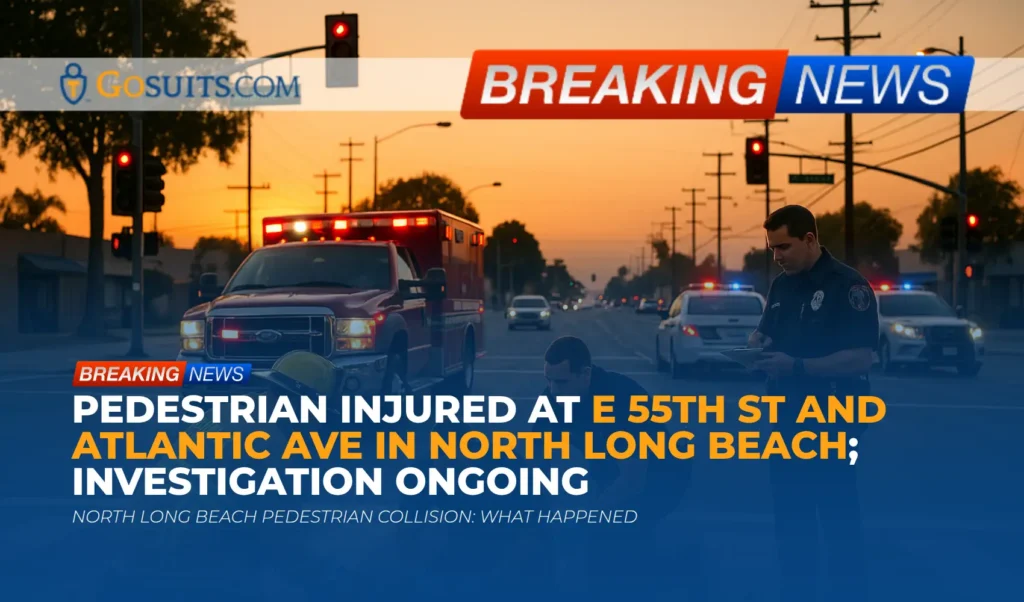- What we know about the Highway 20 and Highway 16 crash near Wilbur Springs
- Roadway context: Highway 20, Highway 16, and typical safety considerations
- Common factors in solo-vehicle tree-strike crashes
- Understanding rights after a California crash
- Where to get official records and practical help
- How to document and preserve evidence early
- Insurance issues and frequent pitfalls in single-vehicle crashes
- When a roadway hazard may involve a government claim
- Key California deadlines to know
- Safety notes for the Highway 20 corridor
- Why timely action matters
- Commentary from Gosuits Wilbur Springs, California Personal Injury Attorney
What we know about the Highway 20 and Highway 16 crash near Wilbur Springs
According to California Highway Patrol dispatch logs, a solo-vehicle crash was reported around 8:06 a.m. near the junction of Highway 20 and Highway 16 in Colusa County, close to Wilbur Springs. Early information indicated a car struck a tree, and possible minor injuries were reported. The cause was not immediately known. These details were reported as of the morning dispatch and may be updated as officials investigate further.
At this stage, it is appropriate to avoid assumptions about the cause. Solo-vehicle incidents can arise from many circumstances, including medical episodes, mechanical issues, roadway conditions, or driver inputs, and the investigation typically clarifies those facts.
Roadway context: Highway 20, Highway 16, and typical safety considerations
State Route 20 (Highway 20) is a major east–west corridor in Northern California, connecting coastal and inland counties and intersecting State Route 16 (Highway 16) near the Cache Creek area. These routes include rural segments, curves, changing grades, and areas with limited shoulders. In such corridors, run-off-road events and fixed-object impacts, such as striking a tree, can occur when a vehicle leaves the travel lane.
Federal data show that fixed-object and roadway departure crashes contribute substantially to severe injuries and fatalities nationwide. NHTSA has published analyses of fixed-object fatal crashes, highlighting the risks when vehicles leave the roadway and impact trees, utility poles, or other rigid objects. Weather can also contribute to crash risk; the Federal Highway Administration notes that wet pavement and rain increase crash frequency and severity due to reduced friction and visibility. These points are general context and not a determination about today’s crash.
Sources:
Common factors in solo-vehicle tree-strike crashes
Investigators typically consider many potential contributors when a single vehicle leaves the roadway and strikes a fixed object. The following are general categories, not conclusions about this event:
- Environmental conditions: Rain, wet pavement, low morning sun, fog, or debris can reduce traction or visibility. FHWA reports that wet pavement accounts for a substantial portion of weather-related crashes nationally.
- Vehicle-related issues: Tire blowouts, brake problems, or steering failures can cause sudden loss of control. NHTSA maintains recall databases and research on crash causation and vehicle defects.
- Roadway design and maintenance: Sharp curves, limited shoulders, lack of clear recovery zones, pavement edge drop-offs, or inadequate signage may contribute to run-off-road risks. Caltrans’ Highway Design Manual discusses clear recovery zones and roadside safety design principles used to reduce the severity of departures.
- Driver input or medical episodes: Fatigue, distraction, sudden illness, or attempts to avoid hazards can factor into a departure from the lane.
Sources:
Understanding rights after a California crash
California law allows injured people to seek compensation for harms caused by negligence, including medical expenses, wage loss, and certain non-economic harms. Even when a crash appears to involve only one vehicle, liability may involve multiple parties, such as a vehicle manufacturer, a contractor responsible for roadway maintenance, or a public entity if a dangerous condition of public property substantially contributed to the incident.
California uses comparative fault principles, which means responsibility can be shared among parties based on their percentage of fault. In some cases, a driver’s own uninsured/underinsured motorist coverage, medical payments coverage, or other first-party benefits may apply, especially when another at-fault party is unidentified or when non-vehicular hazards are involved.
Because early statements to insurers can affect outcomes, it is prudent to consult with a qualified attorney for a free consultation before providing a recorded statement to any insurance company. What is said to an insurer can be used later in ways that are hard to anticipate.
Where to get official records and practical help
California Highway Patrol collision report
If CHP responded, a Traffic Collision Report (often a CHP 555 form) should be available after processing. These reports typically include the officer’s scene diagram, statements, and any noted roadway or vehicle observations.
- How to request: Use the CHP’s collision report portal and follow instructions for requesting from the correct Area Office. You will need details like date, location, and involved parties.
- Find the right CHP office: The junction of SR-20 and SR-16 lies within CHP’s Northern Division service area. To confirm the correct office and submission method, use the statewide office locator.
Useful links:
DMV collision reporting requirement (drivers)
California law requires drivers to report a collision to the DMV using Form SR-1 within 10 days if anyone was injured or killed, or if property damage exceeds $1,000, even if law enforcement took a report. This is separate from insurance notification.
Medical treatment and records
Medical records and billing statements establish the nature and extent of injuries, guide treatment, and are essential in any injury claim. Individuals have a right to access their medical records under federal law.
For fatal incidents: Coroner and autopsy records
In fatal crashes, the county sheriff-coroner handles examinations and certifies cause and manner of death. Families can request information on death certificates and, when available, autopsy records through the county’s sheriff-coroner office and the California Department of Public Health’s vital records system. For Colusa County, the sheriff-coroner would be the point of contact.

911 audio, traffic camera, and maintenance logs
Some emergency communications, roadway maintenance logs, and traffic camera footage may be accessible through a California Public Records Act request. Whether such records exist for a specific incident and whether they are disclosable can vary. If you believe roadway conditions, signage, or maintenance were factors, requesting relevant maintenance or inspection records from Caltrans District 3 can be helpful.
Vehicle data and recalls
Modern vehicles often capture crash-related information through an Event Data Recorder (EDR). Prompt steps may be needed to preserve this data before the vehicle is repaired or salvaged. It is also wise to check for any open safety recalls.
How to document and preserve evidence early
Early documentation improves accuracy and can protect people’s rights if a claim is pursued. Consider the following:
- Photographs and video: Capture the vehicle, the impact area on the tree or roadside, skid marks, debris paths, and any visible roadway defects. Include wide shots and close-ups, and note the time and weather.
- Witness information: If anyone stopped to help or saw the event, collect names and contact details.
- Medical documentation: Seek prompt evaluation, even for seemingly minor symptoms. Keep discharge papers, prescriptions, imaging results, and follow-up instructions.
- Vehicle preservation: Ask the tow yard to hold the vehicle until an inspection is completed. Preserving the vehicle can be critical to identifying mechanical failure or confirming crash dynamics.
- Avoid recorded statements to insurers before consulting counsel: Insurers may request a statement quickly; a free consultation with a seasoned injury attorney can help clarify what to share and when.
Insurance issues and frequent pitfalls in single-vehicle crashes
Even in a single-vehicle crash, insurance coverage can be complex. Relevant coverages may include liability coverage, medical payments coverage (MedPay), collision coverage, and uninsured/underinsured motorist coverage (UM/UIM). California’s UM/UIM statute outlines how benefits may apply when another at-fault party cannot be identified or is inadequately insured.
Common pitfalls include:
- Admitting fault prematurely: What is said before the facts are known can be used to minimize or deny a claim.
- Assuming no claim exists in a solo crash: Roadway defects, inadequate signage, or a defective component may contribute. Without exploring those possibilities, valid claims may be missed.
- Missing first-party benefits: MedPay and UM/UIM can help with medical bills and other losses, depending on the policy terms.
- Not preserving the vehicle: Repairs or salvage can destroy evidence of mechanical failure or crash forces.
Source:
When a roadway hazard may involve a government claim
If a dangerous condition of public property substantially contributed to a crash, claims against a public entity such as the State of California (Caltrans) may be implicated. These claims require compliance with the Government Claims Act, which generally imposes a six-month deadline to present a claim to the appropriate government entity for injury or property damage claims. If a state agency is involved, claims typically go through the Government Claims Program administered by the Department of General Services.
Key points:
- Short deadlines: Most personal injury claims against public entities require claim presentation within six months from the date of injury.
- Specific content: Government claims have content and service requirements. If rejected, a civil lawsuit deadline follows, which differs from regular statutes of limitations.
- Document the condition: Photos, maintenance logs, and prior incident histories can be important evidence in a dangerous condition claim.
Sources:
- Government Code § 911.2 (Six-month claim presentation)
- California DGS: Government Claims Program (ORIM)
Key California deadlines to know
California has different time limits depending on the claim and parties involved. Missing a deadline can bar recovery.
- Personal injury (most cases): Generally two years from the date of injury to file a civil action.
- Claims against public entities: Typically six months to present a government claim before filing suit timelines begin.
- DMV SR-1: Within 10 days for qualifying collisions involving injury, death, or property damage over $1,000.
Sources:
- Code of Civil Procedure § 335.1 (Two-year personal injury period)
- Government Code § 911.2 (Government claims)
- DMV SR-1 Reporting
Safety notes for the Highway 20 corridor
Highway 20 includes rural stretches with curves, limited shoulders, and natural roadside features like trees and embankments. While agencies continually work to improve safety, drivers in this corridor often face changing light, wildlife crossings, and variable weather. FHWA’s research shows that even light rain can increase crash risk on rural corridors due to reduced friction and longer stopping distances.
Practical tips for this corridor include:
- Mind pavement conditions: Increase following distance on wet pavement; braking distances can lengthen significantly.
- Watch curves and speed: Adjust speed well before a curve; avoid braking hard mid-curve on wet surfaces.
- Look for roadside cues: Chevron signs, advisory speed plaques, and rumble strips are designed to guide and alert drivers.
- Be wildlife-aware: Dawn and dusk often see increased animal movement, especially near riparian areas.
Source:
Why timely action matters
Clear steps in the days following a crash can protect safety, preserve evidence, and maintain options. Time is important for several reasons:
- Evidence can disappear quickly: Tire marks fade, debris is cleared, and vehicles are repaired or salvaged. Early photos and a request to preserve the vehicle help ensure a complete investigation.
- Records have retention limits: Some 911 audio, dashcam recordings, and traffic data are overwritten on short cycles. Prompt public records requests increase the chance these materials are saved.
- Medical documentation starts the timeline: Early evaluation connects symptoms to the crash, supports treatment planning, and prevents gaps in care.
- Deadlines are strict: DMV reporting, insurance notice provisions, and government claim requirements each carry their own timelines.
- Insurance positioning begins early: Insurers often make immediate outreach. Consulting a seasoned injury attorney for a free case review first helps avoid statements that can be misconstrued.
An informed approach typically includes documenting the scene and vehicle, identifying witnesses, obtaining the CHP collision report once available, and exploring whether roadway conditions, maintenance, or vehicle defects played a role.

Commentary from Gosuits Wilbur Springs, California Personal Injury Attorney
Our thoughts are with everyone affected by the solo-vehicle crash near the Highway 20 and Highway 16 junction. Mornings on rural corridors can be unsettling when a vehicle leaves the roadway, and even reports of minor injuries deserve attentive care. This article is intended for educational and general information purposes, and we are mindful that the facts may evolve as CHP completes its investigation.
In our view, single-vehicle tree impacts raise several investigative questions that go beyond the immediate scene. It is appropriate to examine not just driver inputs, but also vehicle condition, possible medical episodes, and the roadway environment. On rural state routes like this junction, design and maintenance details such as shoulder condition, clear recovery zones, warning signs, and pavement condition can influence whether a momentary loss of control becomes a serious injury. A thorough review often includes the CHP collision report, vehicle data, photographs, and where appropriate, agency maintenance records.
Insurance carriers and corporate defendants often move quickly to shape the narrative of a crash. Adjusters may request recorded statements early, before all facts are known, and sometimes ask questions in ways that shift responsibility onto the person who was hurt. Corporations and government entities typically have sophisticated risk management processes; they may rely on technical defenses, policy exclusions, or short claim deadlines that can be hard to navigate without guidance. This information imbalance can lead to undervalued claims or missed avenues of recovery if a person does not know which records to request or how to preserve critical evidence.
A free consultation with a skilled personal injury attorney can help clarify the landscape: identifying all potential sources of coverage, preserving the vehicle and electronic data, protecting access to government records, and ensuring that time-sensitive deadlines are met. Just as importantly, it can help someone understand what to say, and what not to say, to any insurer requesting a statement. Taking this step early allows the focus to remain on medical care and recovery while the facts are gathered with care and respect.
References
- California Highway Patrol: Request a Collision Report
- California Highway Patrol: Find an Area Office
- California DMV: SR-1 Collision Reporting
- FHWA: Weather and Road Impacts
- Caltrans: Highway Design Manual
- CCP § 335.1
- Gov. Code § 911.2
- California DGS: Government Claims Program (ORIM)
- Insurance Code § 11580.2
- HHS: Right to Access Health Information
- California Attorney General: Public Records Act
- NHTSA: Recalls
- NHTSA: Event Data Recorder
- Caltrans District 3






